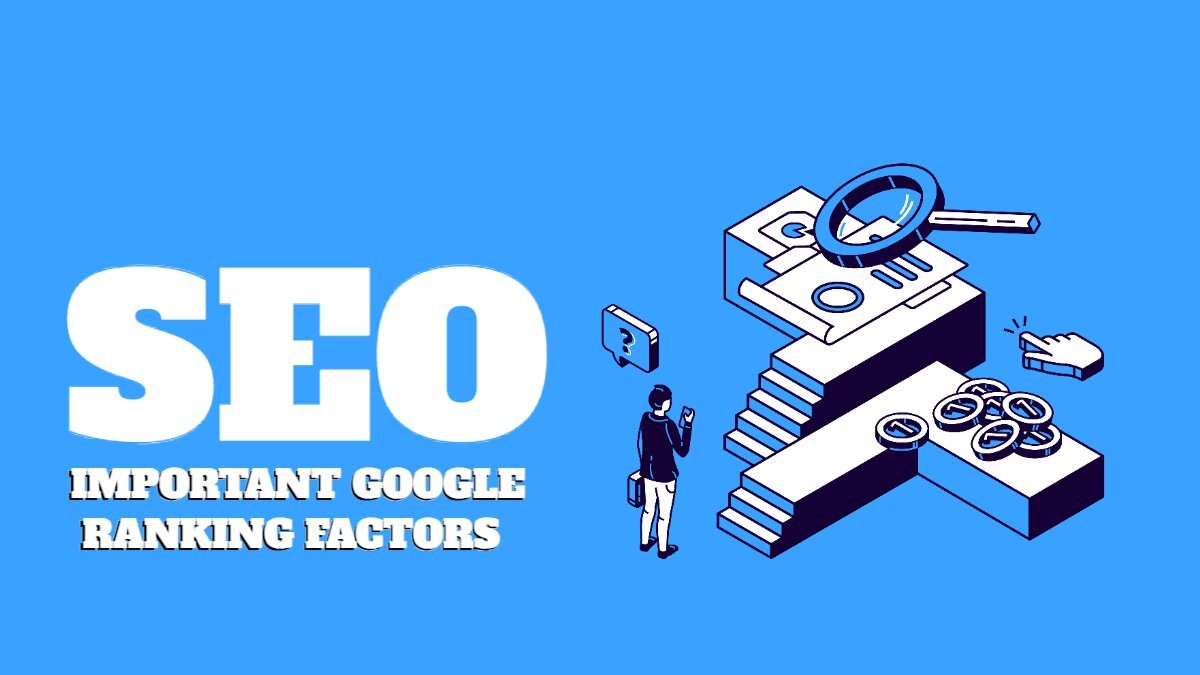Table of Contents
As we head into 2025, the digital landscape continues to evolve, and understanding the most important Google ranking factors is more critical than ever for businesses vying for online visibility. With search algorithms becoming increasingly complicated, merely optimizing for keywords won’t cut it anymore. Instead, you’ll need to focus on a comprehensive strategy that encompasses user experience, mobile optimization, and content relevance.
In this article, we’ll unravel the key factors that can excel your website to the top of search engine results pages. Whether you’re a seasoned SEO expert or just starting out, staying informed about these ranking elements will empower you to adapt and thrive in an unpredictable online environment. Join us as we explore the essential components that can make or break your website’s performance in 2025, ensuring you remain competitive in a crowded digital marketplace.
The Role of E-A-T (Expertise, Authoritativeness, Trustworthiness)
As we advance into 2025, the significance of E-A-T, which stands for Expertise, Authoritativeness, and Trustworthiness, in Google’s ranking algorithm cannot be overstated. E-A-T is particularly crucial for websites that offer advice or information in areas such as health, finance, and legal matters, where misinformation can have serious consequences. Google aims to provide users with the most reliable and accurate information, and E-A-T serves as a benchmark for evaluating the credibility of content and its creators.
Expertise refers to the level of knowledge and skill presented by the content creator. For your content to rank well, it’s essential to demonstrate that the author is a subject matter expert. This can be achieved through detailed author bios, showcasing credentials, and linking to other reputable works by the same author.
Authoritativeness, on the other hand, is about the reputation of the website and the content creator. Building authority involves earning mentions and links from other well-regarded sites in your industry.
Trustworthiness is the third pillar of E-A-T and focuses on the reliability and transparency of your website. This includes having a secure website (HTTPS), clear and accessible contact information, and a transparent privacy policy. User reviews and testimonials also play a significant role in establishing trust. By bolstering these three elements, you can significantly enhance your website’s credibility in the eyes of Google, thereby improving your chances of ranking higher in search results as these are considered as the most important google ranking factors in 2025.
Content Quality and Relevance
In 2025, content quality remains a cornerstone of SEO success. High-quality content is not just about length but also about depth, accuracy, and engagement. Google’s algorithms are becoming increasingly adept at distinguishing between superficial content and in-depth, valuable information. Quality content should address the needs and queries of your audience comprehensively, providing actionable insights and solutions. This means conducting thorough research and presenting information in a clear, concise manner.
Relevance is equally important. Your content must align with the intent behind users’ search queries. This requires a deep understanding of your target audience’s needs, preferences, and search behaviors. Keyword research is still relevant, but it has evolved. Instead of focusing solely on high-volume keywords, it’s crucial to consider long-tail keywords and semantic search terms that reflect natural language and conversational queries. This approach ensures that your content is not only discoverable but also aligned with what users are actually seeking.
Engagement metrics such as time on page, bounce rate, and social shares are indicators of content quality and relevance. Google uses these signals to assess the value of your content. Therefore, creating content that captivates and retains user interest is essential. This can be achieved through compelling headlines, multimedia elements like images and videos, and interactive features such as polls and quizzes. By prioritizing high-quality, relevant content, you can improve user satisfaction and boost your search rankings.
The Importance of Core Web Vitals
Core Web Vitals are a set of specific factors that Google considers crucial for user experience. These metrics, which include Largest Contentful Paint (LCP), First Input Delay (FID), and Cumulative Layout Shift (CLS), are becoming more and more influential in the ranking algorithm. LCP measures how quickly the main content of a page loads, FID assesses the responsiveness and interactivity of a page, and CLS evaluates visual stability by checking how much the content shifts during loading.
Improving these Core Web Vitals is essential for providing a seamless user experience. For LCP, optimizing server response times, leveraging browser caching, and compressing images can significantly enhance load times. For FID, minimizing JavaScript execution and using browser-native features for interactivity can reduce delays. CLS can be improved by reserving space for dynamic elements and avoiding unexpected shifts in layout.
Google’s emphasis on Core Web Vitals underscores the importance of a fast, responsive, and visually stable website. These factors not only affect user experience but also influence bounce rates and user engagement. Websites that excel in these areas are more likely to achieve higher rankings. Regularly monitoring and optimizing these metrics should be an integral part of your SEO strategy in 2025.
User Experience Signals
User experience (UX) has always been a critical component of website success, but its importance in SEO has grown exponentially. Google’s algorithms are designed to prioritize websites that offer an exceptional user experience. This includes factors such as ease of navigation, intuitive design, and overall user satisfaction. A website that is difficult to navigate or understand can lead to higher bounce rates and lower dwell times, both of which negatively impact SEO.
One important aspect of UX is page speed. Slow loading pages frustrate users and can cause them to abandon your site altogether. Tools like Google PageSpeed Insights can help you identify and fix issues that are slowing down your website. Additionally, ensuring that your website is mobile-friendly is crucial, as more users are accessing the web via mobile devices. A responsive design that adapts seamlessly to different screen sizes can significantly enhance user experience.
Another key element is accessibility. Websites that are accessible to users with disabilities not only comply with legal requirements but also improve the overall user experience. Implementing features such as alt text for images, keyboard navigation, and screen reader compatibility can make your website more inclusive. By focusing on these user experience signals, you can create a website that not only ranks well but also delights and retains visitors.
Mobile-Friendliness and Responsive Design
With the increasing prevalence of mobile internet usage, having a mobile-friendly website is no longer optional—it’s a necessity. Google’s mobile-first indexing means that the mobile version of your website is considered the primary version for indexing and ranking purposes. This shift has made responsive design, which ensures that your website looks and functions well on all devices, a critical factor in SEO.
A responsive design adjusts the layout, images, and other elements of your website according to the screen size and orientation of the device being used. This not only improves user experience but also ensures that your content is accessible to a broader audience. Mobile-friendliness involves more than just design; it also includes optimizing page speed and ensuring that touch elements are appropriately spaced to prevent accidental clicks.
Testing your website’s mobile-friendliness using tools like Google’s Mobile-Friendly Test can help you identify areas for improvement. Additionally, implementing Accelerated Mobile Pages (AMP) can enhance mobile performance by stripping down unnecessary elements and focusing on speed. As mobile usage continues to rise, prioritizing mobile-friendliness and responsive design will be essential for maintaining and improving your search rankings in 2025.
Backlinks: Building Authority and Trust
Backlinks remain a vital component of Google’s ranking algorithm. These are links from other websites that point to your site, and they serve as votes of confidence in your content. High-quality backlinks from reputable websites can significantly enhance your site’s authority and trustworthiness, leading to higher search rankings. However, not all backlinks are created equal; quality trumps quantity.
Earning high-quality backlinks requires a strategic approach. Creating valuable, shareable content is a fundamental step. This could be in-depth articles, infographics, or original research that others in your industry find useful and worth linking to. Outreach is another crucial element. Building relationships with influencers, bloggers, and industry leaders can help you earn backlinks from authoritative sources.
Avoiding spammy or low-quality backlinks is equally important. Google’s algorithms are sophisticated enough to detect unnatural link-building practices, and engaging in such activities can result in penalties. Regularly auditing your backlink profile using tools like Google Search Console can help you identify and disavow harmful links. By focusing on acquiring high-quality backlinks, you can build authority and trust, which are essential for achieving and maintaining top search rankings.
Semantic Search and Intent Optimization
The evolution of search engines towards semantic search and understanding user intent has transformed SEO strategies. Semantic search focuses on understanding the meaning behind search queries rather than just matching keywords. This shift means that Google aims to deliver results that are contextually relevant to what the user is looking for, even if the exact keywords aren’t used.
Intent optimization involves aligning your content with the different types of search intent: informational, navigational, transactional, and commercial investigation. Understanding the intent behind a user’s query helps in creating content that meets their needs. For example, informational queries require detailed and educational content, while transactional queries benefit from clear calls-to-action and product information.
Incorporating structured data, or schema markup, can also enhance your content’s relevance by providing search engines with additional context about your pages. This can lead to enhanced search results, such as rich snippets and knowledge panels, which improve visibility and click-through rates. By focusing on semantic search and intent optimization, you ensure that your content is not only discoverable but also highly relevant to users’ needs.
The Impact of Artificial Intelligence on SEO
Artificial Intelligence (AI) is revolutionizing the way search engines operate and how SEO strategies are developed. Google’s AI algorithms, such as RankBrain and BERT, are designed to better understand the context and nuances of search queries. RankBrain uses machine learning to interpret complex queries and deliver more relevant results, while BERT focuses on understanding the intent behind natural language queries.
For SEO professionals, this means adapting to an environment where traditional keyword optimization is no longer sufficient. Instead, creating content that is contextually relevant and provides genuine value to users is paramount. AI also plays a role in content creation, with tools like GPT-3 enabling the generation of high-quality, human-like text. However, while AI-generated content can be useful, it’s essential to ensure that it meets quality standards and provides real value.
AI is also enhancing personalization in search results. Google’s algorithms can tailor search results based on user behavior, preferences, and location, making it essential for websites to provide personalized experiences. Leveraging AI-powered tools for analytics and insights can help you better understand your audience and refine your SEO strategies. As AI continues to evolve, staying informed about its impact on SEO will be crucial for maintaining a competitive edge.
Conclusion
As we navigate the complexities of SEO in 2025, it’s clear that a multifaceted approach is essential for achieving and maintaining top search rankings. The role of E-A-T in establishing credibility, the importance of high-quality and relevant content, and the need to optimize for Core Web Vitals and user experience signals are all critical components. Mobile-friendliness and responsive design are no longer optional but necessary for success in a mobile-first world.
Building high-quality backlinks remains a crucial strategy for enhancing authority and trust, while semantic search and intent optimization ensure that your content meets users’ needs. The impact of AI on SEO continues to grow, requiring a shift towards more contextually relevant and personalized content. By staying informed about these ranking factors and adapting your strategies accordingly, you can ensure that your website remains competitive in an ever-evolving digital landscape.
In conclusion, understanding and implementing these most important Google ranking factors will empower you to thrive in the dynamic world of SEO. Whether you’re a seasoned expert or just starting out, prioritizing these elements will help you achieve better visibility, higher rankings, and ultimately, greater success online. As we look ahead to 2025 and beyond, staying agile and informed will be key to navigating the challenges and opportunities that lie ahead.
Share:


